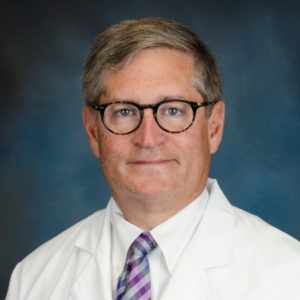CMS Targets Vaccines and Work Restrictions as Staff COVID-19 Infections Skyrocket
 In conjunction with community spread over the past few weeks, the number of nursing homes with new SARS-CoV-2 (COVID-19) infections has increased, and the size of those outbreaks has increased at a “pretty rapid” pace as well, said officials with the Centers for Medicare & Medicaid Services (CMS) and the Centers for Disease Control and Prevention (CDC), who were joined by both CMS Administrator Chiquita Brooks-LaSure and U.S. Surgeon General Vice Admiral Vivek H. Murthy, MD, during the Jan. 6 COVID-19 Vaccine and Booster: National Nursing Home Stakeholder Call.
In conjunction with community spread over the past few weeks, the number of nursing homes with new SARS-CoV-2 (COVID-19) infections has increased, and the size of those outbreaks has increased at a “pretty rapid” pace as well, said officials with the Centers for Medicare & Medicaid Services (CMS) and the Centers for Disease Control and Prevention (CDC), who were joined by both CMS Administrator Chiquita Brooks-LaSure and U.S. Surgeon General Vice Admiral Vivek H. Murthy, MD, during the Jan. 6 COVID-19 Vaccine and Booster: National Nursing Home Stakeholder Call.
Both Brooks-LaSure and Murthy expressed “profound gratitude” for providers’ inspiring “service, sacrifice, and leadership” amid a strong warning that COVID-19 vaccinations and boosters need to be prioritized as the Omicron variant causes an ever-growing wave of infections. Just as of mid-December, the weekly rate of resident and staff COVID-19 cases was roughly the same (around 4,000 to 5,000 cases), officials pointed out. “However, we are seeing a much larger increase in staff cases than resident cases.”
For the week ending Dec. 19, 2021, there were 5,822 staff cases. For the week ending Dec. 26, that number jumped to 10,421—an increase of almost 79 percent. In comparison, resident cases went from 4,285 to 5,155 over the same period, which represents a much more modest increase of 20.3 percent.
Since this call, new data came out. As of Jan. 2, there were 34,242 staff cases and 14,623 resident cases. That represents a 488 percent increase for staff and a 241 percent increase for residents since Dec. 19.
“So, we are concerned that staff are leading to more of the spread and not visitation,” said officials. There are two key issues in play:
- Increased transmissibility. “The Omicron variant is now responsible for an estimated 93 to 97 percent of all U.S. cases,” said officials. “Omicron is testing our defenses. We are seeing that the Omicron variant is about two to three times more transmissible than the last major variant, which is Delta. This aligns with this rapid rise in cases that we are seeing.”
- Lagging staff boosters. “The vaccines and boosters help to prevent severe illness, hospitalization, and death,” said officials. “The booster is particularly important with Omicron because Omicron can evade some of our defenses [i.e., there are varying estimates of a 20 percent to 50 percent drop in vaccine effectiveness]. With the booster, we are able to build an even bigger army, if you will, with our immune system to tackle this new variant. Data from Israel are demonstrating that people who have received their boosters have less severe disease and lower mortality. We are also seeing data from the U.K. that demonstrate an increase in vaccine effectiveness against Omicron for those who are boosted.”
As of Dec. 26, 87.3 percent of residents and 79.7 percent of staff nationwide are fully vaccinated with a complete primary series of either the two-shot Pfizer-BioNTech or Moderna mRNA vaccines or the one-shot Janssen (Johnson & Johnson) vaccine. In addition, 62 percent of nursing home residents have received a booster, “which is really fantastic,” they noted. “However, among nursing home staff, that number is just 27.6 percent, which is behind the national average [of almost 35 percent]. So, we all still have a lot to do to promote confidence in these vaccines in order to keep both staff and residents safe.”
Battling social media misinformation
One common narrative on social media is that a lot of people who got vaccinated are still testing positive, so the vaccines and boosters must not work, said officials. “But let’s just remember that the most important role of the vaccine is to save your life and keep you out of the hospital. By that measure, these vaccines are actually doing remarkably well. The vast majority of people who are in the hospital with COVID-19 illness are in fact people who are unvaccinated. That is why getting vaccinated—getting boosted in particular—is more important now than ever before … to knock down the severity of this virus.”
The vaccines and the boosters are not just good for each individual, added officials. “They are good for the people around you, especially your patients who may be more vulnerable. This is why we have seen, again and again in the data, that in facilities where there is a low rate of vaccination among staff, more residents tend to get infected. But by contrast, where the vaccination rates are high among staff, that actually helps protect residents as well.”
In addition, providers need to share the message that the COVID-19 vaccines are the subject of
“the most extensive vaccine safety monitoring in history,” said officials. “Hundreds of millions of people in the United States have safely received these vaccines.”
The CDC monitors vaccine safety through the public-facing, smartphone-based V-Safe After-Vaccination Health Checker, as well as via the Vaccine Adverse Event Reporting System (VAERS), which is used by both healthcare professionals and the general public. The agency has now monitored the administration of more than 600 million doses. “That is an extraordinary number of vaccines,” said officials. “It is a lot of real-world experience that we are drawing on that tells us that these continue to be effective, but they also continue to be remarkably safe.”
When to boost
CMS currently is not changing the definition of fully vaccinated. “That still remains the completion of a primary series: two doses of an mRNA vaccine or one dose of J&J,” said officials.
“However, fully vaccinated implies that you are finished with vaccination, and we know that is not the case, particularly in light of these new variants,” said officials. “It is incredibly important to get a booster dose to boost your immunity and maintain protection.”
Therefore, the CDC is now shifting its language to recommend that people stay “up to date with all recommended doses of COVID-19 vaccine,” said officials. “For everyone 12 years and older, that does include the completion of a primary series plus a single booster.”
The current recommendations for booster doses for people 12 and older include the following:
- For anyone who received Moderna as a primary series, the interval to boost has now been reduced to five months.
- For anyone who received Pfizer-BioNTech as a primary series, the interval to boost has now been reduced to five months.
- For anyone who received J&J as a primary series, the interval to boost (with an mRNA vaccine booster) remains two months.
Do previously infected people need vaccines? ‘An emphatic yes’
“Natural immunity does provide protection. It does provide an immune response to SARS-CoV-2,” said officials. However, the answer to the question “Do people who have had COVID-19 still need to get vaccinated?” is “an emphatic yes.”
Natural immunity wanes just as vaccine immunity does, officials explained. “It is important to get vaccinated to maintain that strong immunity against infection, particularly as we are seeing the evolution of new variants.”
Don’t forget the flu vaccine
“We are also approaching the peak of flu season, and it may be a severe season this year,” said officials. “It is important to get vaccinated for both flu and COVID-19. Both vaccines can be administered together and are free of charge for people with Medicare. Please continue to help your residents and communities get the COVID-19 and flu vaccines or boosters.”
Infection prevention: Source control is critical
“The safest practice for everyone in healthcare settings, including nursing homes, is to implement universal use of source control,” said officials. “This means wearing a NIOSH-approved N95 or equivalent or higher-level respirator; a respirator approved under standards used in other countries that is similar to an N95; or a well-fitting face mask.”
While universal use of source control offers some general leeway in the type of mask used, that leeway disappears when staff are caring for certain residents, emphasized officials. “Healthcare personnel who enter the room of a resident who is in insolation because they have SARS-CoV-2 infection or who enter the room of a resident who is in quarantine due to close-contact exposure should be using a NIOSH-approved N95 or higher-level respirator in addition to gown, gloves, and eye protection.”
Staff also need to remember that infection prevention extends beyond situations where they are providing care, said officials. “We have to be careful in break rooms and other areas of the facility where we are not practicing those core principles of infection prevention and control to help mitigate the spread of COVID-19.”
It’s also important to practice safety when not at work, said officials. “Your safety outside the workplace contributes to your safety in the workplace. So remember that wearing masks outside of work and when you are in indoor settings with people outside of your household can help reduce risk. Whenever possible, [consider] upgrading your [off-work] masks from a cloth mask to a surgical mask, a KN95 or KF94, or a comfortable N95. Just remember that the best mask is the highest-quality one that you can actually wear comfortably and well. It doesn’t make sense to wear the highest-quality mask if you are not able to wear it for long periods of time if you are going to be in a high-risk situation.”
Note: Need help finding noncounterfeit masks for personal use? Try the nonprofit Project N95. If shipping costs are prohibitive, it may be helpful to search manufacturers on this site and then to buy direct.
Isolation and quarantine and work restrictions
The CDC recently updated community guidance on isolation and quarantine, but this guidance is for the general population, said officials. “It is not intended to apply to healthcare settings—not healthcare personnel, residents, or even visitors. We do not want individuals who are visiting nursing homes to apply this guidance and then go see a family member who might be vulnerable.”
The CDC did release guidance for healthcare personnel on Dec. 23 addressing work restrictions in healthcare personnel with SARS-CoV-2 infection or with exposures to someone else with SARS-CoV-2 infection, as well as guidance on strategies to mitigate healthcare personnel staffing shortages, said officials. “And there is a difference between the healthcare and the community guidance in order to offer enhanced protection to healthcare personnel and to decrease the risk of secondary transmission.”
While the work restriction guidance goes into much greater detail, it’s important to understand the following, said officials:
- For both asymptomatic and mildly symptomatic healthcare personnel with SARS-CoV-2 infection, the duration of recommended work restrictions in a conventional staffing situation is:
- Seven days with a negative test within the 48 hours prior to return, or
- Ten days without testing or if that test at the five- to seven-day mark was positive.
- For symptomatic healthcare personnel to return to work, they also should have:
- Improving symptoms, and
- Be afebrile and off of fever-reducing medicines for at least 24 hours.
Note: The CDC’s return-to-work guidance now includes different guidance for conventional staffing situations, contingency staffing situations, and crisis staffing situations. Providers should be sure to use the guidance that applies to their specific staffing scenario. There is also different guidance for staff who have had severe to critical illness or who are moderately to severely immunocompromised.
For asymptomatic healthcare personnel with COVID-19 exposures, the decision related to work restrictions is made based on vaccination status, said officials. “The CDC is updating that terminology for how we will refer to COVID-19 vaccination status, but the key point here is that the need for work restriction is determined by whether that healthcare worker is up-to-date with all currently recommended vaccine doses. This means that they have completed that primary COVID-19 vaccine series, and they’ve either received the booster or they have not yet reached that time period since their primary series to be eligible for the booster, and they are considered up-to-date.”
These individuals do not have recommended work restrictions in a conventional staffing situation, said officials. “However, they should be tested immediately not less than 24 hours after an exposure and then again around day 5 – 7. [In addition,] individuals within 90 days of prior infections will not require work restrictions.”
Asymptomatic individuals with COVID-19 exposures who are not considered up-to-date (i.e., they are unvaccinated, haven’t completed the primary series, or are eligible for but have not yet received the booster) and who have not had a prior infection within 90 days would be restricted from work for seven days with a negative test within the 48 hours prior to return or for 10 days without a test, added officials.
Note: Again, rules differ for contingency and crisis staffing situations, so providers need to clearly understand when they meet the criteria for each scenario.
“Another important point is that the criteria for higher-risk exposure for healthcare personnel has been updated,” said officials. “Prolonged contact with a patient, visitor, or another healthcare worker with confirmed SARS-CoV-2 infection is considered to be a higher-risk exposure if that healthcare worker was not wearing a respirator—or if they were wearing a face mask, but the person with SARS-CoV-2 infection was not wearing a cloth mask or a face mask. Additionally, if that healthcare worker was not wearing eye protection and the infected person was not wearing a cloth mask or a face mask, or if the healthcare worker was not wearing all of the recommended PPE [personal protective equipment] while performing an aerosol-generating procedure, these would all be considered higher-risk exposures.”
Many providers are already facing significant staffing shortages and may need to follow contingency or crisis standards, acknowledge officials. “It is important to keep in mind, though, that healthcare personnel who are returning to work in those contingency or crisis standards must be well enough and agree to return.”
Note: Keep watch for additional updates to nursing home and general healthcare infection prevention and control guidance to more closely align with the changes made for healthcare personnel.
Visitations can still occur amid Omicron surge
On Jan. 6, CMS posted revised Nursing Home Frequently Asked Questions (FAQs). The bottom line is that Omicron being more transmissible is not a reason to pause visitations again. “It is important to note that federal regulations explicitly state that residents have the right to visitation and the right to make choices about their life. … We at CMS and CDC believe that visitation can still occur,” stressed officials. This position is based on two factors:
- The severely negative impacts of facility lockdowns. “The lack of visitation has been truly traumatic for nursing home residents, having very real physical and psychosocial impacts on their well-being,” said officials. “We have to remember that in a person-centered plan of care, we don’t focus on any one part of a person’s well-being. We try to focus on all of it, and that includes their psychosocial and physical well-being—not just infection control. And we have seen real decline in this area. It is truly heartbreaking to come between a resident and their loved one.”
- The ability to reduce the risk of transmission with a layered approach. “Visitation can occur in a manner that reduces the risk of transmission,” said officials. “With COVID-19, there has never been one solution—although vaccination is clearly our strongest defense against severe disease and hopefully infection. It has always been layered. That is why we need to employ all of the things to reduce the risk of transmission, in particular when it comes to visitation. So we need people [both residents and visitors] to get vaccinated; we need everyone to practice frequent hand hygiene; we need everyone to wear their masks; and we need physical distancing.”
Additional steps that providers can take to further reduce the risk of transmission include designating dedicated areas for visitations to occur, preferably outdoors, weather permitting, or in spaces with good ventilation that staff clean before and after visits, suggested officials. “We also believe that facilities should be working with their state and local health departments to help manage outbreaks and also potentially to help structure visitation as much as possible to reduce the risk of transmission.”
Contact the state QIN-QIO for help
Twelve Quality Improvement Network Quality Improvement Organizations (QIN-QIOs) cover the entire country to provide technical assistance with both infection prevention and control practices and vaccinations, pointed out officials. Note: Providers can find their state QIO’s name, phone number, and website here.
Key opportunities for QIN-QIOs to provide assistance include the following, according to officials:
- Coordinate both onsite and mobile vaccination clinics to provide residents and staff with influenza vaccinations, as well as the COVID-19 primary series and booster vaccinations.
- Help nursing homes partner with local pharmacies for staff and resident vaccine administration.
- Assist with challenges, if present, with managing staffing shortages or high staff turnover due to illness, in addition to vaccine supply and access.
- Teach nursing home leaders to have conversations with staff, specifically with the use of motivational interviewing (a technique that is proven to overcome vaccine hesitancy).
- Help nursing homes set up vaccine champion or vaccine ambassador programs.
- Work with nursing home administrators to develop policies that have been shown to increase COVID-19 vaccine uptake among staff. “These include policies that offer paid time off for scheduling, for travel, and for symptom recovery from getting the vaccine; also policies that deliver individual or group incentives for getting vaccinated; or policies that assist with new employee onboarding requirements and training on infection control,” explained officials.
- Help nursing homes with challenges that nursing homes may face with vaccine data reporting.
- Facilitate the provision of additional state and local resources to nursing homes. The QIN-QIOs have strong, ongoing relationships with both local and state health departments, so they can assist facilities with accessing resources in addition to interpreting the multiple federal, state, and local guidelines that nursing homes must follow.
Note: CMS expects to hold another nursing home stakeholder call soon.

Caralyn Davis is a freelance writer specializing in the post-acute care sector. Email her at: caralynd@outlook.com.
Related Articles
Topics: Facility management , Featured Articles , Infection control , Medicare/Medicaid , Regulatory Compliance , Resident Care , Risk Management , Staffing , Training









